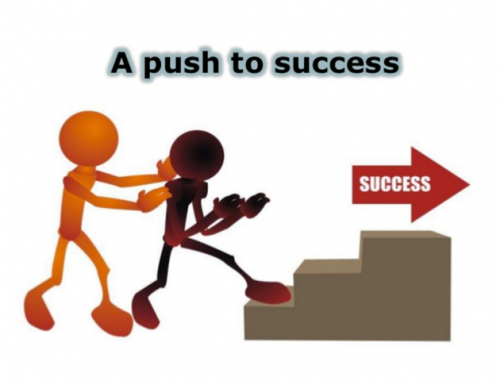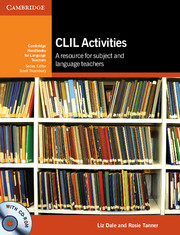An Innovation for the HCT V2 Foundations and Content Programs ? Content and Language Integrated Learning (CLIL)
B Wheelahan1.0 What is CLIL?
Content and Language Integrated Learning (CLIL) is a way to build content knowledge and focus on language simultaneously. It is rapidly gaining traction around the world as Governments seek to save on their education budget. The Council of Europe describes CLIL as “a major innovation improving both the quality of language learning and reform of educational curricula”. The CLIL approach is also seen as a cost effective means for Governments to provide foreign language development without investing in dedicated language classes in primary and secondary schools.
Whilst technology is being touted as a cost savings device it is often embracing and perpetuating outmoded pedagogy. I believe the value of CLIL strategies is a more cost effective solution for intensive English courses and technology should be adaptive and support leading pedagogy such as CLIL. Too often we are sold ready-made technology as the answer to reading problems etc which is often designed around outmoded pedagogy and like outdated discrete item testing techniques taking central position in a curriculum. In my opinion, it all add ups to a negative backwash for learners and wasted class time on learning that is not aligned to a deeper understanding of what IELTS knowledge, skills and strategies are required, alignining to the “CEFR Can Do Statements” and the match of a variety of CLIL approaches to language learning
2.0 Use of CLIL in Secondary Schools and Foundations/Bridging Programs
Secondary language teacher training for academic English in Australia focuses on teaching content (Humanities and Sciences) and ESL simultaneously to prepare students for tertiary education. CLIL has existed for a long time, however, there has been a growing interest in CLIL methods and increasing application in countries such as the EU, UK and Australia where Government funding for ESL programs has been reduced. In the European Union 80% of member states provide some type of CLIL provision in mainstream education. There is now a European Framework for teacher education in CLIL. It is suitable for both foreign language and content teachers and is based on a set of defined target professional competences There is also a Cambridge UCLES TKT test specializing in CLIL.
In Australia they use a CLIL approach to teach Year 9 – 12 students from non-English speaking backgrounds in mainstream humanities and science subjects such as History, Geography, Environmental Studies, Economics or Psychology. It is also used in bridging and foundations programs at universities for Asian (particularly Chinese) and Middle Eastern students to bridge the content and knowledge gap on IELTS topic knowledge in English.
3.0 The Challenges of Gaps in Content Knowledge of Foundations Students
The common challenges with Foundations students are:
- Learning the skills and strategies for the IELTS exams and question task types.
- They have learnt “bits” of deconstructed language with the V/G focus.
- The lack of English language proficiency as per the “Can do Statements” of the CEFR
- Engagement / Motivation in wanting to read.
- Lack of content and subject knowledge both locally and globally.
- Rapid generation of ideas in a timed environment for Writing task 2 and Speaking Part 3.
Content and Language Integrated Learning (CLIL) is an ideal tool to focus on building gaps in content knowledge missed in secondary school by connecting with previous knowledge, whilst focusing simultaneously on language and motivating learners to engage in content. This is in stark contrast to disengaging, discrete language items, de-contextualized and lacking any personal meaning or memorability.
CLIL teaching and learning approaches have the potential to address points 2-4 above simultaneously, which can possibly be a more effective form of lesson time than traditional language only based lessons.

Many teachers believe CLIL addresses the gap in content or topic knowledge necessary to perform well in the speaking or writing exams or to bring schema to the reading or listening exams. A high degree of language input on the IELTS topics is necessary to develop new knowledge, ideas and concepts whilst developing language proficiency faster. This is supported by SLA research which emphasizes the need to introduce meaningful, relevant and realistic language.
Furthermore, richer language in context can be explored and acquired using a lexico-grammatical approach pegged and learned in context and transferred. Finally, student’s language acquisition progresses faster with meaningful, rich spoken and written content text input than “stand alone” language lessons.
4.0 Use of CLIL Approaches by ESL and Content Teachers
As a language teacher you interweave content into your language lesson and as a content teacher you can interweave language into your content lesson. Accordingly, I also believe it as an extremely useful approach for content teachers in the Diploma and BAS programs at HCT where teachers have the dual purpose of teaching content and the responsibility for teaching the language of the subject area.
In the Diploma and Bachelor Programs it would be a change in perception of teaching content through another language rather than in another language i.e. where a subject teacher focuses on both language and content in their lessons. Whether the focus is on content or language at a given time can change depending on the needs of the students at a given time in the lesson. The emphasis of whether the content or language is focused on changes depending on the situation and needs of the learners. Whilst assessment in the Diploma and Bachelor programs is in English, the need to focus on the language of the specific content area by content teachers is vital to ensure students can demonstrate their learning without a language barrier. The training of Content faculty in CLIL methodologies will improve learner success and prepare them well for a bi-lingual work environment. Having knowledge of content as an instructor must be in parallel with training in teaching principles for learners of content through the medium of a non-native language. The University of Cambridge ESOL Award – TKT – CLIL exam tests knowledge and concepts of the CLIL approach.
http://www.cambridgeenglish.org/images/tkt-clil-handbook.pdf
5.0 The Benefits of CLIL
 The benefits of the CLIL approach are outlined by L Dale and R Tanner (2013). They include:
The benefits of the CLIL approach are outlined by L Dale and R Tanner (2013). They include:
- Motivating and engaging for learners as they feel they are learning about the world (local and global) not just language in a de-contextualized environment.
- Learning is more challenging as learners feel the benefit of gaining new knowledge.
- CLIL learners develop more cognitively as they must understand subject concepts and develop their thinking skills and creativity.
- As learners develop an ability to understand a wider range of spoken and written text, there is a higher degree of comprehensible input on both general and more specialized topics.
- CLIL learners are more likely to remember more as language is embedded strongly in context and the subject knowledge activates memory of language.
- They learn to use and transfer the target language by topic and context.
- Constructivist theories of language learning suggest learners create meaning by linking old knowledge with new knowledge. It readily connects with prior content knowledge (even the concepts studied in another language) for learners to make sense of what they are learning.
- CLIL language learners progress faster than those learning separate language lessons.
- A higher degree of language input in a foreign language environment is vital. SLA research suggests this input should e meaningful, relevant and realistic and CLIL activities allow learners to actively process input.
- Development of intercultural awareness learning about ideas to communicate with people of different cultures.
How CLIL are You?
Almost all our English faculty already use a variety of CLIL approaches. There is no single CLIL pedagogy. There are just characteristics of a classroom that define to what extent you integrate subject and content knowledge. You can use the checklist in the link below developed by Coyle et al (2010) to determine to what extent you use a CLIL approach to language learning and as a guide or focus for independent professional learning.
http://ateneu.xtec.cat/wikiform/wikiexport/_media/cmd/lle/clsa/modul_6/checklist_how.pdf
Scoring
After you have responded to the statements add up your scores as follows
Always 4, Often 3, Sometimes 2, Occasionally 1, Never 0
Over 100 – Well informed experienced CLIL teacher
75-100 – On your way to being an effective CLIL teacher
35 – 70 – You use CLIL on an ad hoc basis.
CLIL Activities – A Resource Book for Teachers
 If you are interested in a refresher or pursuing this approach further or dipping into some CLIL style activities, I highly recommend the Cambridge Handbook for Language Teachers written by by Liz Dale and Rosie Tanner in 2012 and edited by Scott Thornbury. The book is titled “CLIL Activities – A Resource for subject and language teaches”. The following provides a brief summary.
If you are interested in a refresher or pursuing this approach further or dipping into some CLIL style activities, I highly recommend the Cambridge Handbook for Language Teachers written by by Liz Dale and Rosie Tanner in 2012 and edited by Scott Thornbury. The book is titled “CLIL Activities – A Resource for subject and language teaches”. The following provides a brief summary.
It is a great introduction to the benefits for learners, CLIL snapshots, the role of the teacher and learner and packed with over 90 different transferable activities to build content knowledge and simultaneously focus on language. The thinking curriculum is firmly embedded in the approach and tasks are very student centered. It also embeds the practice of assessment for and as learning.
CLIL Curriculum
Many teachers already apply a CLIL approach , however I believe our curriculum should explicitly embrace and facilitate the CLIL approach to align our curriculum with emerging world best practice.
Further Reading
You can read a more comprehensive description of the learning theories behind CLIL in:
- Coyle, D (2006) “Content and Language Integrated Learning: motivating learners and teachers’ Scottish Language Review 13, 1-18.
- Coyle D Hood P and Marsh D (2010) CLIL Cambridge: Cambridge University Press
- Dale L and Rosie Tanner (2013) CLIL Activities – A Resource for Subject and Language Teachers. CUP.
- University of Cambridge ESOL Examinations (2010) Teaching Knowledge Test (Content and language Integrated Learning teaching Award – Teacher Handbook http://www.cambridgeenglish.org/images/tkt-clil-handbook.pdf
By Brigid Wheelahan
B.TRP, CELTA, Grad. Dip. Sec. Ed (ESL/SOSE), M. App Ling. (TESOL)
Registered Secondary School Humanities/ESL teacher

Great article Brigid. I am a firm believer in adopting CLIL methods. I think it is very useful in the environment we teach in.